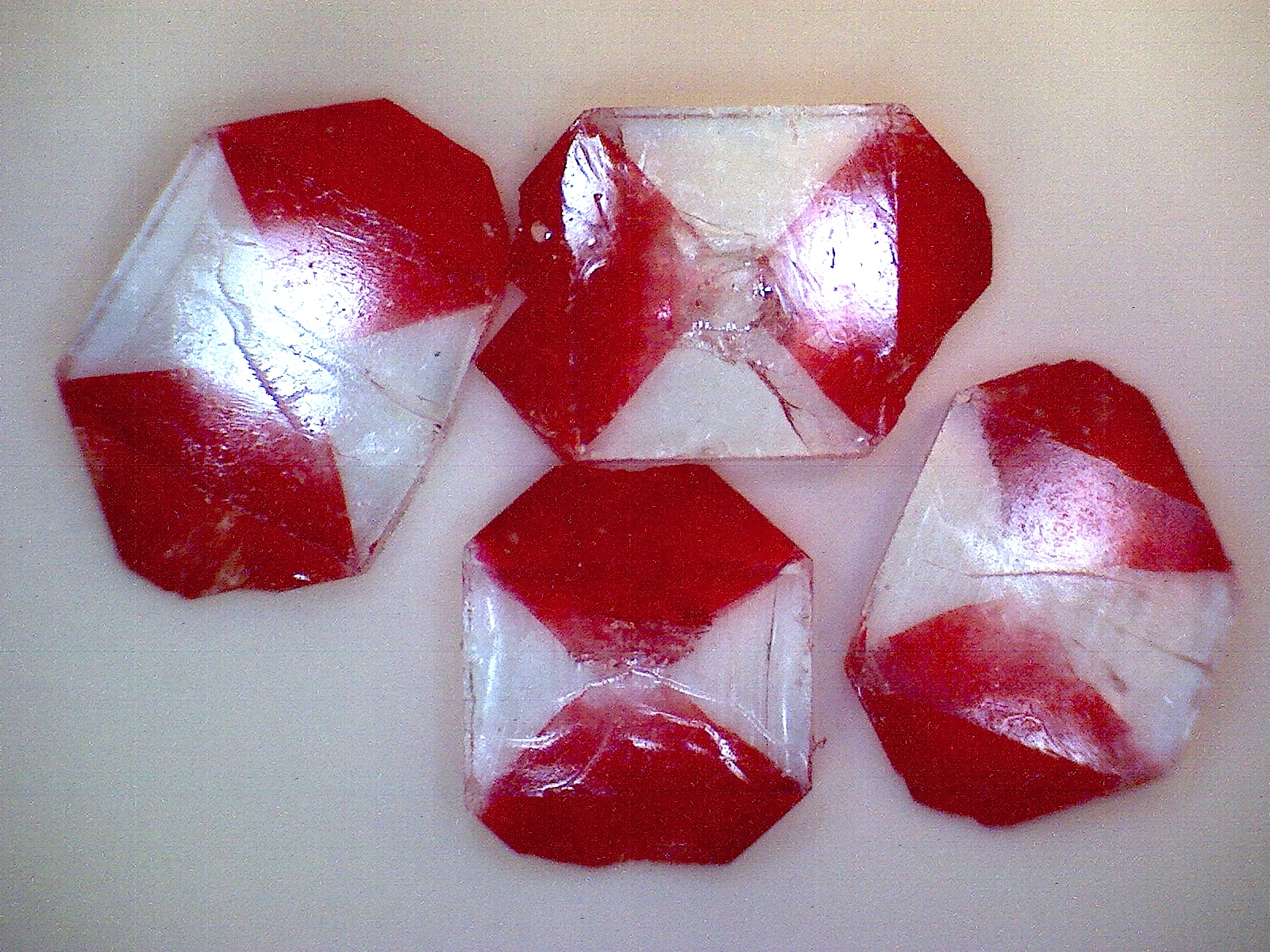Examples of artificially grown crystals
potassium dihydrogenphosphate
 |
| Crystals of potassium dihydrogenphosphate (KDP) grown in the presence of the red dye amaranth. KDP crystals have oriented and overgrown organic chromophores in {101} growth sectors. The dyeing is controlled by the specificity of noncovalent interactions between the colored molecules and the growing crystal interfaces. |
Crystal details |
|
| Compound name | potassium dihydrogenphosphate |
| Formula | KH2PO4 |
| Dimensions | 10 x 7 x 5 mm |
| Mass | 0.5-1.0 |
| Colour | transparent with red ‘bow-ties’ |
| Keywords | inorg |
Growth conditions |
|
| Technique | temperature decrease |
| Temperature | 350 |
| Pressure | |
| Growth rate | |
| Solvent | amaranth (Color Index No. 16185) |
| Doping procedure | amaranth (Color Index No. 16185) |
| Keywords | sol |
Comments |
|
| Application(s) | Fluorescent KDP crystals can be exploited for self-frequency doubled single crystal dye lasers in which the functions of emission, polarization, and frequency doubling are accomplished in a single crystal gain medium. |
| Link(s) | http://chemistry.fas.nyu.edu/object/bartkahr; B. Kahr, R. W. Gurney, Dyeing Crystals, Chemical Reviews (2001) vol. 101 p. 893-951 (DOI: 10.1021/cr980088n) |
| Other remarks | Recipe for preparing cm sized crystals of KH2PO4 dyed by amaranth (C20H11N2Na3O10S3, Color Index No. 16185) in the {101} growth sectors: (a) Dissolve 17 g of KH2PO4 (potassium dihydrogenphosphate, potassium phosphate monobasic) in a 250 mL beaker charged with 50 mL of water (de-ionised water is preferred but "soft" tap water is sufficient for growing crystals of good quality). (b) Warm the beaker while stirring to ensure dissolution. The hot solution may be filtered but this is not critical. (c) Add 4 mL of a 1 mg/mL solution of amaranth to the KH2PO4 solution and stir for approximately 2 min with glass rod or spoon (a magnetic stir-bar works well in the laboratory) (d) Carefully transfer the solution to a 100 mL crystallising dish placed upon a vibration-free surface. (e) KH2PO4 crystals containing red ‘bow-ties’ of dye molecules will crystallize within 4–6 h. |
© The Contributor
Conditions of reuse: Creative Commons Attribution Licence


